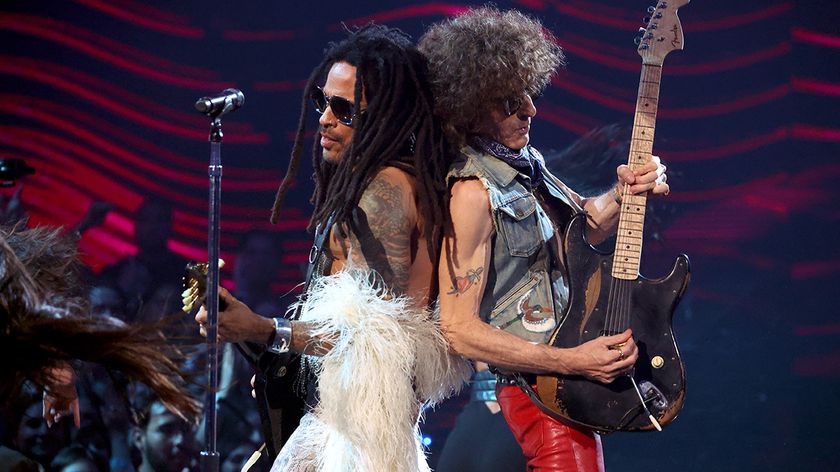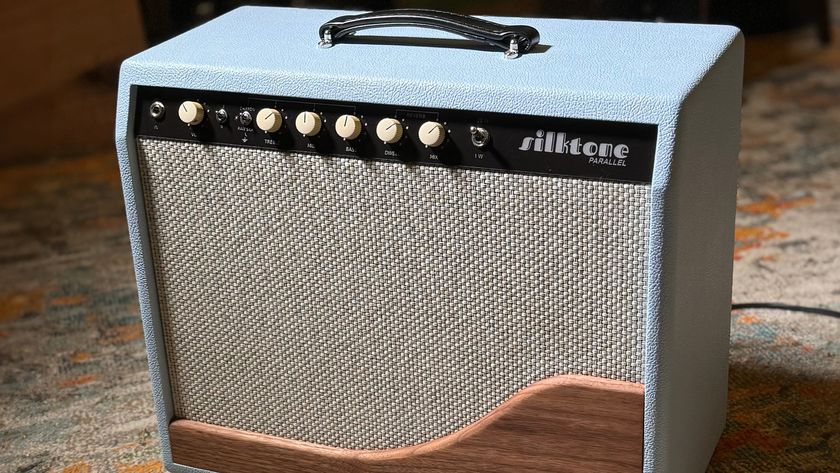In Deep with Andy Aledort: The Guitar Mastery of Lonnie Johnson

Even casual fans of jazz and blues guitar are likely to be familiar with the names T-Bone Walker, Charlie Christian and Django Reinhardt, all towering figures of blues and jazz who are rightfully revered as three of the greatest and most influential guitarists of all time.
But far fewer are aware of the incredible playing of Lonnie Johnson, a truly brilliant guitarist and violinist (he also studied piano and mandolin, among other instruments) who was performing and recording well before any of the other three.
This month’s edition of In Deep is dedicated to an exploration of the soloing brilliance of Lonnie Johnson.
Alonzo "Lonnie" Johnson (February 8, 1899–June 16, 1970) was born in New Orleans and relocated to St. Louis in 1921. After winning a blues contest in 1925, he began a recording career that resulted in the release of 130 recordings between 1925 and 1932, during which time he performed regularly with such stars of the day as Louis Armstrong, Duke Ellington, Bessie Smith, Johnny St. Cyr, Victoria Spivey and Texas Alexander. In 1929, Lonnie, who had previously recorded many solo pieces on 12-string acoustic guitar, teamed up with jazz guitarist Eddie Lang, and the two—with Lang using the pseudonym Blind Willie Dunn—recorded a wide range of incredible instrumental duets such as “Hot Fingers,” “Guitar Blues,” “A Handful of Riffs” and many others. Johnson has been recognized as “the undeniable creator of the guitar solo played note by note with a pick,” according to blues historian Gerard Herzhaft. He is also credited as the first recorded guitarist to employ string bending and vibrato. One listen to Lonnie’s early records clearly reveals the direct influence on Walker and Reinhardt, and especially B.B. King, who has always cited Johnson as one of his primary influences.
The tunes “Hot Fingers” and “A Handful of Riffs” are played as spirited, up-tempo 12-bar blues, performed with a “cut-time,” or alla breve, feel. Cut time is another name for 2/2 meter, which represents a feel of two half notes per bar (ONE-two, ONE-two, etc.). It emphasizes what is referred to as a “two” feel and is often used in traditional country music, with two beats (half notes) strongly accentuated in each bar. In cut time, quarter notes go by very quickly, so recognizing the half-note feel will simplify reading musical examples. More importantly, it better represents the rhythm of this style of music.
Eddie Lang, a top-notch jazz guitarist in his own right, often took the role of rhythm guitarist in his duet recordings with Johnson. As was the style of the day, Lang laid down swinging, and often very complex “comping” (complimentary) rhythm parts that combine small chord voicings with single-note melodic figures, voice leading and connecting phrases.
Figure 1 illustrates a typical Lang-style rhythm guitar part played within a 12-bar blues form in the key of D. Bars 1–4 feature “alternating bass,” as the lowest note in the figure moves between the root note, D, and the fifth below, A. The end of bar 4 includes a “walk-down” to set up the IV (four) chord, G7, and bar 6 includes a “walk-up” to Fs, the major third of D, on the downbeat of beat one in bar 7, on the return to the I (one), D7. Bar 8 ends with a transition from Bf7 to A7, the V (five) chord, with bar 10 including a walk-down to the root note of D7 on the downbeat of bar 11, which is rounded out with a turnaround descending line played against a higher D root note. As complicated as this may sound, this rhythm part is about as basic as Lang gets, with many of his “comps” much more animated and harmonically rich.
Get The Pick Newsletter
All the latest guitar news, interviews, lessons, reviews, deals and more, direct to your inbox!
Figure 2 offers the first of three Johnson-inspired guitar solos presented in this lesson. All three are played with a “triplet feel,” which means that notes written as eighths are sounded as a quarter-note/eighth-note combination within an eighth-note triplet (also known as a “swing” feel). Figure 2 begins with a two-bar phrase, played twice, in which the simple melodic line in bar 1 is repeated an octave lower in bar 2. Bar 5, over G7, is built from the notes of a G major triad—G B D—after which there is a shift to lines that emphasize the notes of a D major triad—D F# A—with the use of D major pentatonic (D E F# A B). Bars 9 and 10, over A7, move from D major pentatonic (in bar 9) to the notes of an A major triad—A C# E (bar 10)—followed by a return to D major pentatonic over the one, D7. Most of Johnson’s solos closely reference the chord progression in this manner.
Figure 3 offers another solo and, like the previous example, begins with a repeated two-bar melodic line, based here on D major pentatonic. In bar 6, over G7, and bar 8, over D7, natural harmonics (N.H.) are sounded by lightly touching the string with a fretting finger directly above the indicated fret, picking the string and then lifting the finger, which will create a sustaining, chime-like sound. Bar 10, which moves from the five chord, A7, back to the one chord, D7, incorporates another D major pentatonic-based melodic line that is repeated.
As stated earlier, Johnson was an accomplished violinist, and the solo illustrated in Figure 4 begins with a series of fast, violin-like sliding phrases. If we look at the notes played on all of the downbeats in bars 1 and 2, we find that they are derived from D major pentatonic—B D F# A B. On each of these notes, quickly slide down one fret and then back up to the starting fret in a rhythm of an eighth-note triplet. This tricky maneuver will take some practice to master. The technique is then applied to the four chord, G7, using the notes B, E and D, after which the initial sliding figure is repeated. The lines in bars 9 and 10, over A7, are built from an A dominant-seven arpeggio—A C# E G—with the ninth, B, included. The solo then wraps up with a typical Johnson-style melodic line that clearly outlines the return to the one chord, D7.
Guitar World Associate Editor Andy Aledort is recognized worldwide for his vast contributions to guitar instruction, via his many best-selling instructional DVDs, transcription books and online lessons. Andy is a regular contributor to Guitar World and Truefire, and has toured with Dickey Betts of the Allman Brothers, as well as participating in several Jimi Hendrix Tribute Tours.

“We had 15 minutes left, and it was time to go… I just started playing that riff. Then Lenny goes, ‘Whoa, what’s that?’” Lenny Kravitz guitarist Craig Ross reveals the serendipitous roots of a Kravitz classic

“The concept of the guitar duel at the end was just appalling”: Crossroads is an essential piece of '80s guitar lore, but not every guitar legend was a fan of the film









